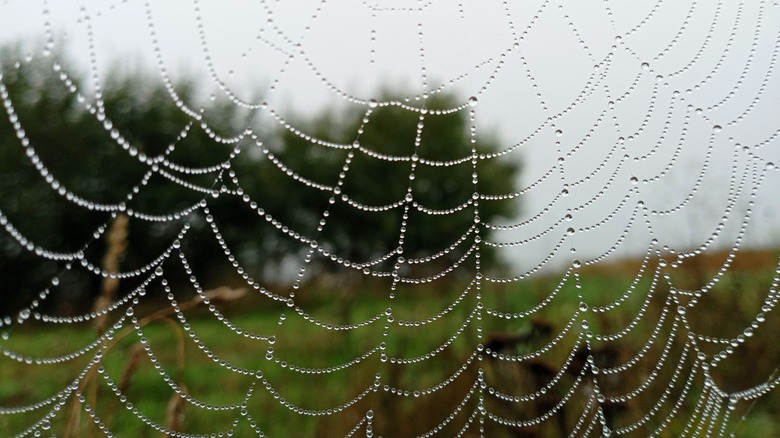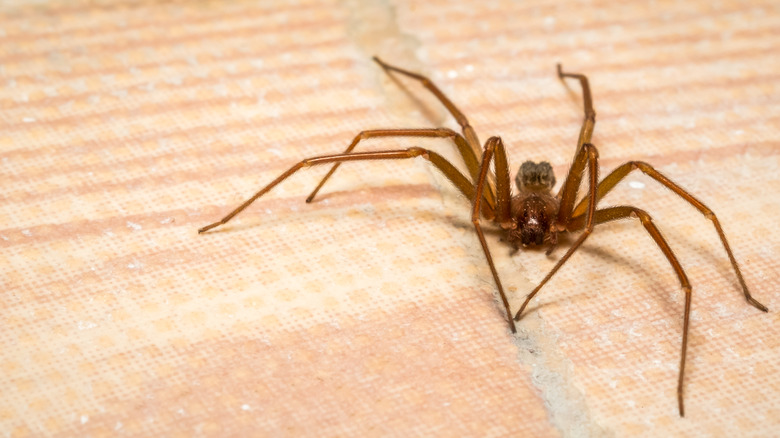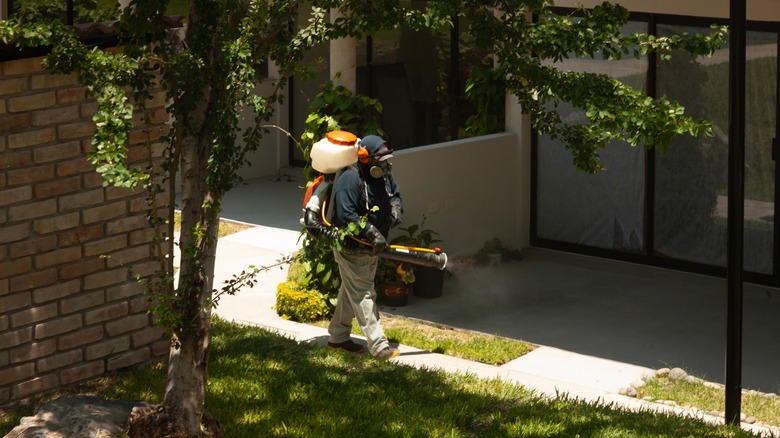This Is The Most Venomous Spider In The US (& What To Do If You See One In Your Yard)
Think that terrifying beasts and creatures belong only in myths? Oh, we wish! Unfortunately for all of us, there are plenty of dangerous and super scary critters out there, some in our very backyards. In fact, one wee beast that could be inhabiting the shadows of your gardens might be out there right now — the brown recluse spider.
This spider, native to the U.S.'s central, southern, and midwestern states, is known first and foremost for its venomous bite. Though shy and preferring to stay hidden, it can bite when cornered or unexpectedly comes into contact with humans and pets, and its bite can be nothing short of a medical horror story.
From skin necrosis and deep, open sores to other symptoms such as nausea, vomiting, fever, rashes, and muscle pain, brown recluse spiders are nothing to scoff at. Luckily, severe reactions are rare, but the bites of these tiny creatures can lead to organ damage and, on very few occasions, death. However, fatalities from brown recluse bites are extremely uncommon.
Now that you know what they can do, the real questions remain: How do you identify these arachnids, where they live in your yard, and, most of all, how do you get rid of these dangerous brown recluse spiders?
How do you identify a brown recluse spider?
First, how do you know if what you have found is a brown recluse? Well, true to its name, the brown recluse is both brown and, well, reclusive. The adult brown recluse sports a light brown body with a distinctive violin-shaped mark on its back, right behind its eyes. However, this characteristic mark develops as the spider matures and isn't present in younglings.
One of the more telling identifiers is its eyes — brown recluses have six eyes arranged in three pairs, unlike most spiders, which have eight. Their legs lack the spines or bands typical of many other spiders for which they're often mistaken. Female brown recluses build flat, sheet-like webs to capture prey, while males hunt actively. They're nocturnal creatures, resting in hidden spots during the day within structures they infest.
Your yard and lawn might also be attracting brown recluse spiders, especially in places like woodpiles, sheds, ornamental rocks, and underbrush. They may also take refuge in debris like leaves or old cardboard boxes left unattended. You'll also want to check areas near your home's foundation, as these spiders often seek shelter close to human dwellings, particularly in hidden spaces such as beneath porches or between patio stones.
How do you get rid of brown recluse spiders?
Knowing where a brown recluse might live in your yard is only half the battle; the other half is knowing how to get rid of them. Since brown recluse spiders seek shelter in dry, dark, undisturbed areas, they can be really tough to get and keep under control once they've established themselves in your yard.
While there are some DIY methods to handle smaller numbers of these arachnids, the best course of action to fully eliminate them involves an integrated pest management plan executed by calling in a professional. While waiting for the professionals, there are steps you can take. Remove potential breeding habitats like woodpiles, leaf litter, and rocks around your yard where spiders may thrive. Keep your garden and outdoor areas clean and organized to avoid creating inviting hiding spaces for these sneaky spiders. Remember, pest management professionals will thoroughly inspect your yard, decide on control technology, and practice effective treatments to ensure the brown recluse infestation is contained.
Now, we know that having a venomous spider in your yard can be unsettling, but identifying and managing brown recluses can make all the difference. They might be tiny, but understanding their behavior and habitat can help keep them at bay — and ensure you can enjoy your yard without worries.


